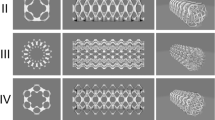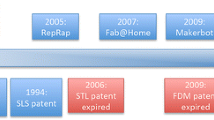Abstract
The present work aims to make a proof of concept comparing mechanical tests in a commercial model of airway stent (HCPA-1) versus experimental and virtual simulation mechanical tests using finite elements in a dimensionally similar stent made by a 3D printer in flexible non-biocompatible material. The material of the 3D printed stent was hyperelastically characterized from experimental mechanical tests on samples that allowed calculating the constitutive constants for the hyperelastic models. Virtual simulations of mechanical tests using finite element analysis in the ANSYS software with the available hyperelastic models were compared with the experimental tests, obtaining the precision of the hyperelastic models in the material used to print the stent. A cough-like mechanical test was performed experimentally on HCPA-1 and 3D printed stents simulating a critical condition of use. The results were compared with a virtual simulation using the hyperelastic models obtaining precision that varied from 2.5 to 280% depending on the hyperelastic model used. The work shows that it is possible to obtain virtually the mechanical response of an airway stent using finite elements. Making it possible to minimize the time and financial investment needed to evaluate the research and development of new materials, geometries or customized models based on medical images using the 3D printing technique. Flexible and biocompatible materials for the 3D printer should emerge in the future. Allowing 3D printing of implantable airway stents in patients.
Access this chapter
Tax calculation will be finalised at checkout
Purchases are for personal use only
Similar content being viewed by others
References
Barros Casas D, Fernandez-Bussy S, Folch E (2014) Nonmalignant central airway obstruction. Arch Bronconeumol 50:345–354
Schweiger T, Gildea TR, Prosch H, Lang G, Klepetko W, Hoetzenecker SO, Fleck N, Radford D (2006) The uniaxial stress versus strain response of pig skin and silicone rubber at low and high strain rates. Int J Impact Eng 32:1384–1402
Cheng GZ, San Jose Estepar R, Folch E (2016) Three dimensional printing and 3D slicer: powerful tools in understanding and treating structural lung disease. Chest 149:1136–1142
3D printing of medical devices. Accessed 10 Apr 2020. https://www.fda.gov/medical-devices/products-and-medical-procedures/3d-printing-medical-devices
INCA (2018) Incidência de Câncer no Brasil para 2018. Instituto Nacional do Câncer
Meunier L, Chagnon G, Favier D, Orgéas L, Vacher P (2008) Mechanical experimental characterisation and numerical modelling of an unfilled silicone rubber. Polym Test 27:765–777
Vacher P, Dumoulin S, Morestin F, Mguil-Touchal S (1999) Bidimensional strain measurement using digital images. Inst Mech Eng Part C ImechE 213:811–817
Favier D, Louche H, Schlosser P, Orgé L, Vacher P, Debove L (2007) Homogeneous and heterogeneous deformation mechanisms in an austenitic polycrystalline Ti-50.8 at.% Ni thin tube under tension. Investigation via temperature and strain fields measurements. Acta Mater 55:5310–5322
Giton M, Caro-Bretelle A-S, Ienny P (2006) Hyperelastic behaviour identification by forward problem resolution: application to a tear test of silicone-rubber. Strain 42:291–297
Frank S (2008) Optical strain measurement by digital image analysis. Matlab. https://www.mathworks.com/matlabcentral/fileexchange/20438-optical-strain-measurement-by-digital-image-analysis. 21 Nov 2019
Malvè M, del Palomar AP, López-Villalobos JL et al (2010) FSI analysis of the coughing mechanism in a human trachea. Ann Biomed Eng 38:1556–1565
Marczak RJ, Iturrioz I (2006) Caracterização do Comportamento de Materiais Hiperelásticos. Outubro
FDA. Guidance for industry and FDA staff—non-clinical engineering tests and recommended labeling for intravascular stents and associated delivery systems, document issued on: 18 Apr 2010
Author information
Authors and Affiliations
Corresponding author
Editor information
Editors and Affiliations
Rights and permissions
Copyright information
© 2022 Springer Nature Switzerland AG
About this paper
Cite this paper
Müller, A.F. et al. (2022). Evaluation of Hyperelastic Constitutive Models Applied to Airway Stents Made by a 3D Printer. In: Bastos-Filho, T.F., de Oliveira Caldeira, E.M., Frizera-Neto, A. (eds) XXVII Brazilian Congress on Biomedical Engineering. CBEB 2020. IFMBE Proceedings, vol 83. Springer, Cham. https://doi.org/10.1007/978-3-030-70601-2_132
Download citation
DOI: https://doi.org/10.1007/978-3-030-70601-2_132
Published:
Publisher Name: Springer, Cham
Print ISBN: 978-3-030-70600-5
Online ISBN: 978-3-030-70601-2
eBook Packages: EngineeringEngineering (R0)




